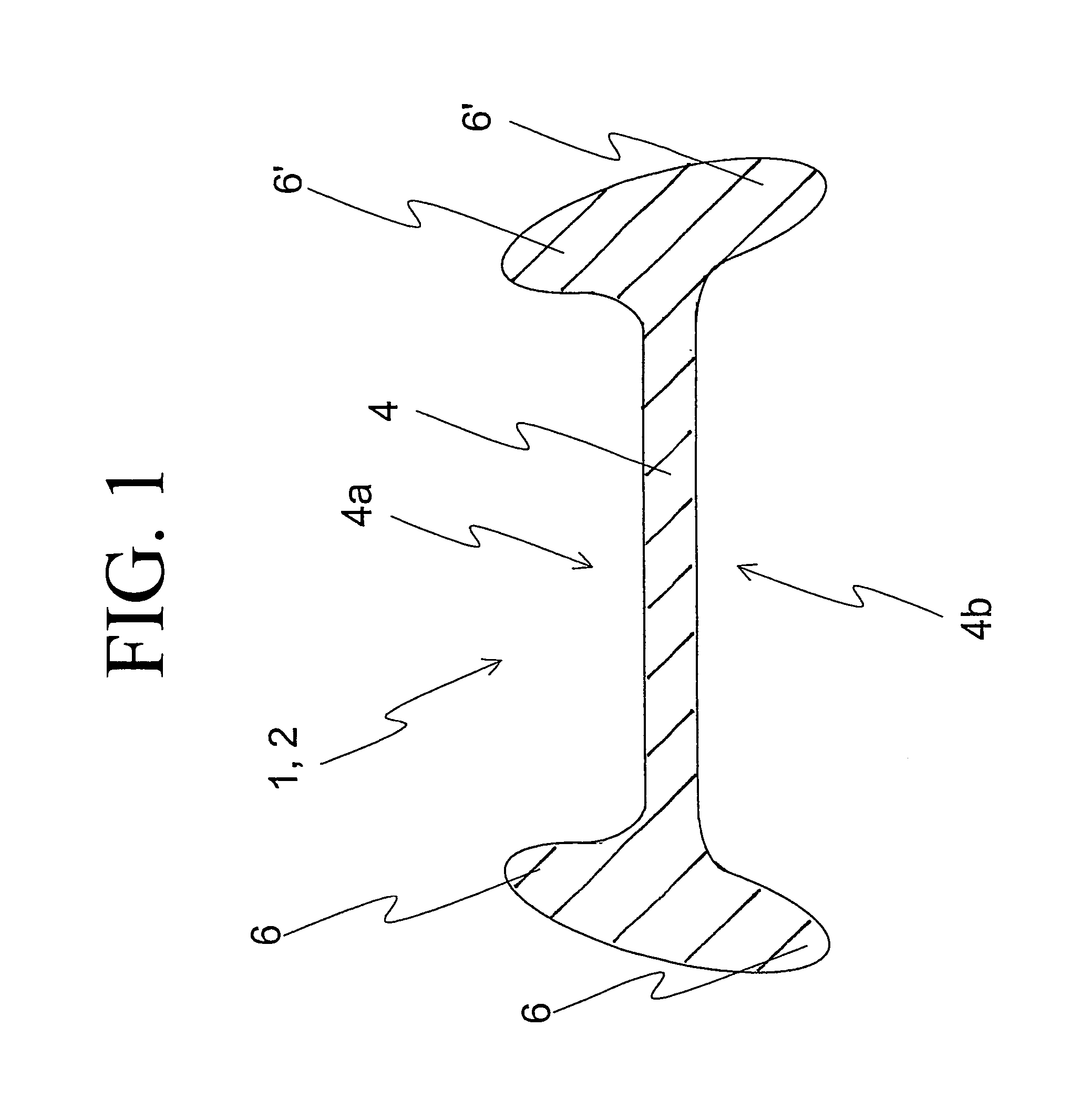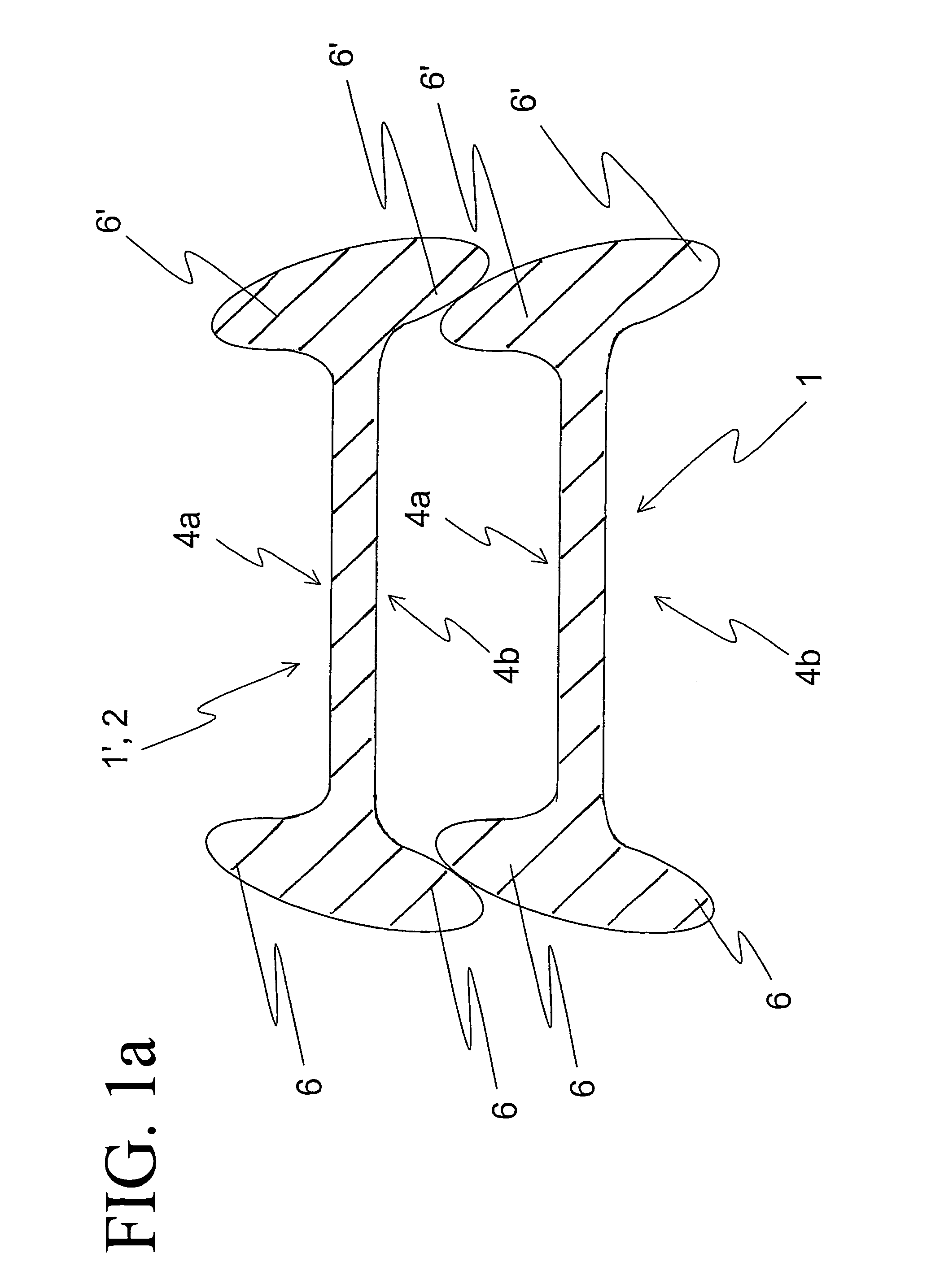Stackable pieces of flatware
a flatware and stacking technology, applied in the field of stacking cutlery elements, can solve the problems of inability to re-use the principle of cutlery elements, inability to achieve stack density, and inability to achieve the shape of cutlery elements, so as to facilitate automatic centering of individual cutlery elements, reduce the risk of becoming stuck, and facilitate the effect of automatic centering
- Summary
- Abstract
- Description
- Claims
- Application Information
AI Technical Summary
Benefits of technology
Problems solved by technology
Method used
Image
Examples
Embodiment Construction
[0029]FIG. 1 explains the structure of a cutlery element 1 of this invention with reference to a cross-section perpendicular to the longitudinal axis of handle 2 of cutlery element 1. Longitudinal ribs 6, 6′ are shaped on the edges of the first side 4a and second side 4b of the wall 4 of handle 2.
[0030]As shown in FIG. 1a, the longitudinal ribs are designed so that when cutlery elements 1, 1′ of this invention are stacked, ribs 6, 6′ of first side 4a of a cutlery element 1 engage positively in ribs 6, 6′ of second side 4b of the other cutlery element 1′. The same applies to the end ribs not shown in cross-section.
[0031]FIGS. 2 and 2a show a further embodiment of a cutlery element 1 of this invention, in a cross-section taken through handle 2. Longitudinal ribs 6, 6′ are arranged at right angles to the wall. Longitudinal ribs 6, 6′ of first side 4a are offset toward the inside in relation to longitudinal ribs 6, 6′ of second side 4b. When cutlery elements 1, 1′ of this invention are ...
PUM
 Login to View More
Login to View More Abstract
Description
Claims
Application Information
 Login to View More
Login to View More - R&D
- Intellectual Property
- Life Sciences
- Materials
- Tech Scout
- Unparalleled Data Quality
- Higher Quality Content
- 60% Fewer Hallucinations
Browse by: Latest US Patents, China's latest patents, Technical Efficacy Thesaurus, Application Domain, Technology Topic, Popular Technical Reports.
© 2025 PatSnap. All rights reserved.Legal|Privacy policy|Modern Slavery Act Transparency Statement|Sitemap|About US| Contact US: help@patsnap.com



